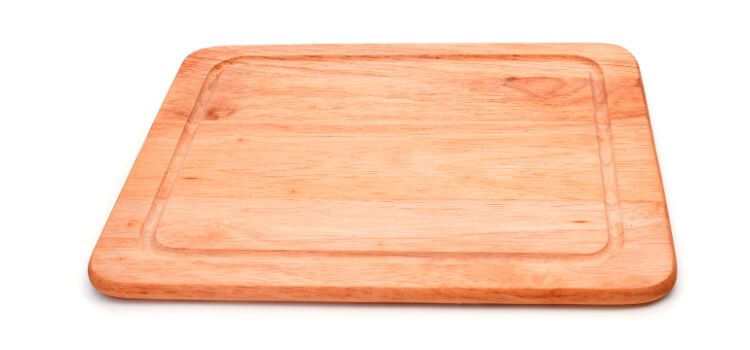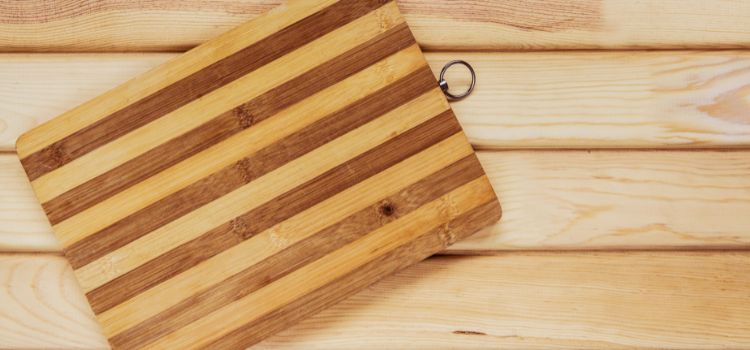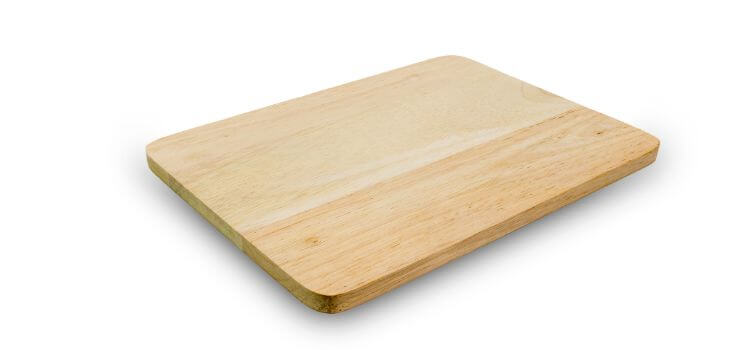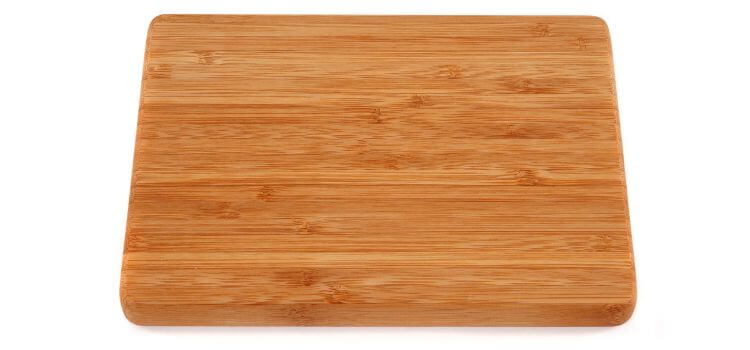As an Amazon Associate, I earn from qualifying purchases

Selecting the perfect cutting board for your kitchen requires meticulous evaluation of several aspects to guarantee it fulfills your cooking requirements. choosing between edge grain and end grain can significantly impact your cooking experience. This article explores the distinctions between edge grain and end grain cutting boards, examining their distinct features, advantages, and optimal applications.
Whether you’re a seasoned chef or a kitchen enthusiast, understanding the nuances of these two types of cutting boards will help you make an informed decision that enhances both your culinary skills and the longevity of your kitchen tools.
What is Edge Grain?

Edge grain cutting boards are crafted by aligning slender strips of wood, uniform in width and length, side by side. The wood strips are combined using adhesive to create a durable and robust surface.
Characteristics and properties
- Durability: The arrangement of the wooden strips provides a sturdy surface that can withstand heavy-duty use without showing signs of wear and tear.
- Hardness: Edge grain boards tend to be harder, making them an excellent choice for chopping tough ingredients.
- Lightweight: Their construction makes edge grain boards lighter than end grain cutting boards. This makes them easier to handle and move around in the kitchen.
- Affordability: Edge grain boards tend to be more budget-friendly than end grain cutting boards, making them an attractive option for those on a budget.
Pros and cons of edge grain cutting boards
Pros:
- Ideal for heavy-duty use
- Easy to maintain and clean
- Lightweight and easy to handle
- More affordable than end grain cutting boards
Cons:
- May dull knives quicker due to the hardness of the wood
- Less aesthetically pleasing compared to end grain boards
What is End Grain?

End grain cutting boards are arranged vertically by arranging wooden blocks so the end grain faces upwards. The wooden blocks are joined together using adhesive and pressure to create a sturdy surface for chopping and cutting.
Characteristics and properties
- Knife-friendliness: End grain boards are considered the most knife-friendly option due to their construction. The vertical placement of the wood fibers allows knives to cut into the board’s surface without causing damage.
- Self-healing properties: End grain boards have self-healing properties, meaning that small cuts and scratches on their surface will close up over time, maintaining a smooth and flat cutting surface.
- Aesthetically pleasing: The unique pattern created by the end grain construction makes for a beautiful and eye-catching addition to any kitchen.
- Heavy-duty use: End grain boards are exceptionally durable, resisting signs of wear and tear even under heavy use, which makes them a preferred option for professional chefs.
Pros and cons of end grain cutting boards
Pros:
- Knife-friendly surface
- Self-healing properties
- Aesthetically pleasing
- Durable and sturdy for heavy-duty use
Cons:
- More expensive compared to edge grain cutting boards
- Requires more maintenance and care.
Comparing Edge Grain and End Grain Cutting Boards
Contrasting features of edge grain and end grain boards:
- Construction: Edge grain boards are made by arranging wood strips horizontally, while end grain boards are constructed using wooden blocks arranged vertically.
- Knife-friendliness: End grain boards are considered more knife-friendly than edge grain boards due to their self-healing properties and softer surface.
- Durability: Both types of cutting boards are durable; edge grain boards are better suited for heavy-duty use, while end grain boards are more likely to show signs of wear and tear over time.
Optimal uses for edge grain and end grain cutting boards:
- Edge Grain: Edge grain cutting boards stand out as a superior option for everyday kitchen use. They can withstand heavy chopping and cutting without showing damage or dulling knives.
- End Grain: End grain cutting boards are ideal for professional chefs who require a highly knife-friendly surface for intricate and precise cutting. They are also suitable for heavy-duty use, making them versatile in any kitchen setting.
Durability comparison:
Both cutting boards are durable options; however, the type of use and maintenance can affect their longevity. End grain boards may require more careful handling, edge grain boards are designed to endure more rigorous use, resisting signs of wear and tear effectively.
Maintenance requirements:
Proper maintenance is essential for edge and end grain boards to ensure longevity. Here are some tips for maintaining each type:
- Edge Grain: To maintain an edge grain board, regularly oiling the surface with food-grade mineral oil is recommended. Additionally, avoid soaking or exposing the board to excessive moisture.
- End Grain: End grain boards require more frequent oiling than edge grain boards. Mineral oil and beeswax are recommended for regular maintenance. Additionally, avoid exposing the board to high temperatures or excessive moisture.
Best Uses for Edge Grain and End Grain Cutting Boards

Ideal scenarios for using edge grain boards:
- Everyday use in home kitchens
- Chopping and cutting tough ingredients
- Preparation of raw meats
Ideal scenarios for using end grain boards:
- Professional, high-volume kitchens
- Slicing and dicing delicate ingredients
- Displaying food items or serving as a charcuterie board
Choosing the Right Cutting Board for Your Kitchen
Factors to consider when selecting between edge grain and end grain cutting boards:
- Budget: Edge grain boards are more budget-friendly, while end grain boards are typically more expensive.
- Type of use: Consider how often and for what task you will use the cutting board. Edge grain boards may be a better choice for heavy-duty use, while end grain boards are ideal for precision cutting and professional kitchens.
- Maintenance: Both cutting boards require regular maintenance, but end grain boards may need more frequent oiling to maintain their surface.
- Aesthetics: If you value the appearance of your cutting board, end grain boards present an exquisite and distinctive pattern guaranteed to captivate onlookers.
- Knife-friendliness: If maintaining sharp knives is a priority, end-grain cutting boards are the best option as they are more knife-friendly.
Conclusion
When choosing the right cutting board for your kitchen, several factors must be considered. End grain and edge grain cutting boards each come with their own set of pros and cons.
Consider how you will use the cutting board, your budget, and maintenance requirements before deciding. Whichever type you choose, proper care and maintenance are essential for preserving the longevity of your knives and maintaining their sharpness. Happy chopping!
As an Amazon Associate, I earn from qualifying purchases